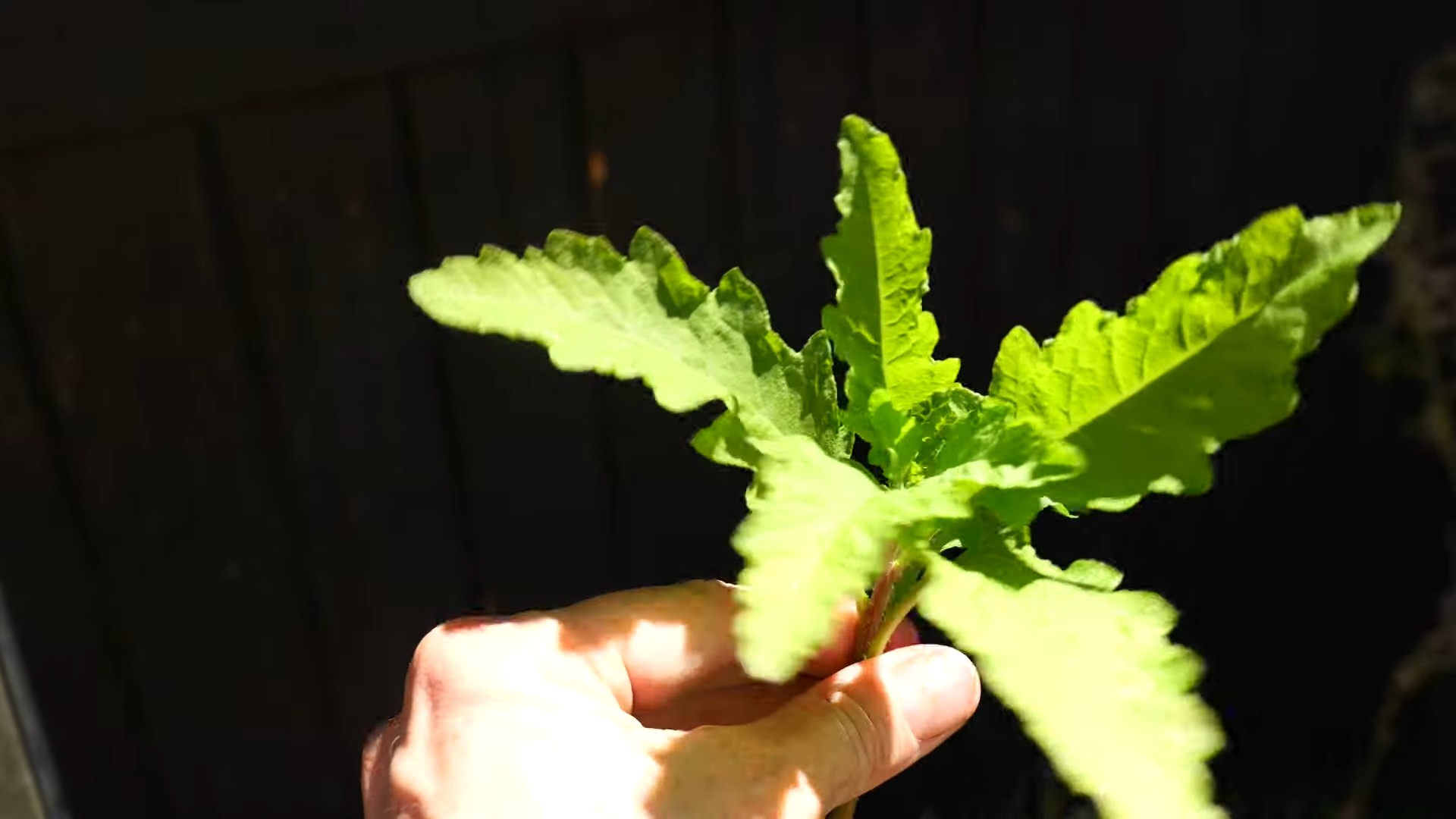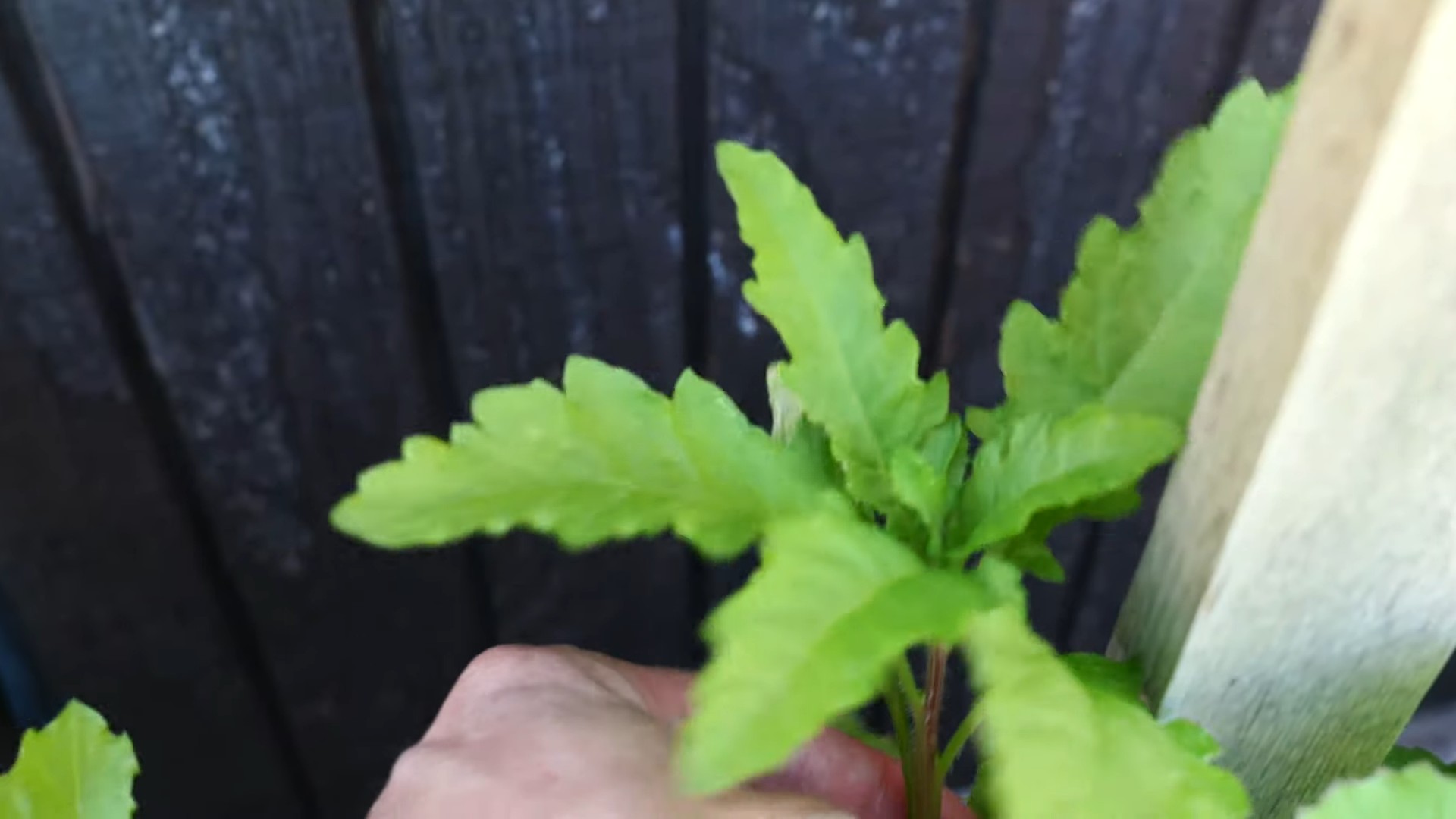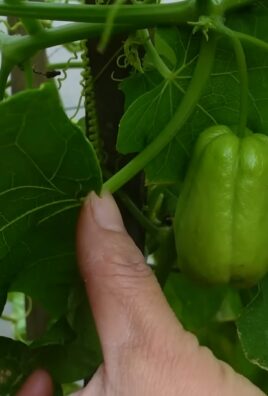Grow Epazote in Kitchen Garden: Unlock the secrets to cultivating this vibrant herb right in your own backyard! Have you ever dreamt of adding a unique, zesty flavor to your Mexican-inspired dishes, all while knowing exactly where your ingredients come from? Well, dream no more! This DIY guide will walk you through the simple steps to successfully grow epazote, also known as wormseed, in your very own kitchen garden.
Epazote has a rich history, deeply rooted in Mesoamerican cultures. For centuries, it has been used not only as a culinary herb but also for its medicinal properties. Imagine connecting with that ancient tradition by nurturing this plant yourself! But beyond its historical significance, why should you bother growing epazote? Well, store-bought herbs often lack the freshness and potency of homegrown varieties. Plus, epazote can be difficult to find in many grocery stores. By learning how to grow epazote in your kitchen garden, you’ll have a readily available supply of this flavorful herb, adding a distinctive touch to your cooking and impressing your friends and family with your culinary prowess.
I know what you’re thinking: “I don’t have a green thumb!” Don’t worry! This guide is designed for beginners. I’ll share easy-to-follow tips and tricks that will have you harvesting your own epazote in no time. Let’s get started and transform your kitchen garden into a haven for this amazing herb!

Growing Epazote in Your Kitchen Garden: A DIY Guide
Hey there, fellow gardening enthusiasts! I’m so excited to share my experience with growing epazote, a fantastic herb with a unique flavor profile, right in my own kitchen garden. It’s surprisingly easy, and the fresh leaves add a wonderful zest to Mexican and Central American dishes. Let’s dive in!
Choosing the Right Spot and Preparing the Soil
Before we even think about planting, we need to make sure our epazote has a happy home. Here’s what I’ve learned about creating the perfect environment:
* Sunlight: Epazote loves sunshine! Aim for at least 6 hours of direct sunlight per day. A south-facing spot in your garden is ideal.
* Soil: While epazote isn’t too picky, it thrives in well-draining soil. If your soil is heavy clay, like mine was initially, amend it with compost or other organic matter to improve drainage.
* pH: A slightly acidic to neutral pH (around 6.0 to 7.0) is perfect. You can test your soil’s pH with a simple soil testing kit from your local garden center.
* Space: Epazote can grow quite tall (up to 4 feet!), so give it enough space to spread out. I usually allow about 12-18 inches between plants.
Starting from Seed or Seedlings
You have two main options for getting your epazote journey started: seeds or seedlings. I’ve tried both, and here’s my take:
* Seeds: Starting from seed is more economical, but it requires a bit more patience.
* Indoor Starting: I prefer to start my epazote seeds indoors about 6-8 weeks before the last expected frost. This gives them a head start.
* Direct Sowing: You can also direct sow the seeds into your garden after the last frost, but germination might be slower.
* Seedlings: Buying seedlings from a nursery is a quicker option, but it’s usually more expensive. Just make sure the seedlings look healthy and vibrant before you buy them.
Step-by-Step Planting Guide
Alright, let’s get our hands dirty! Here’s my step-by-step guide to planting epazote, whether you’re starting from seeds or seedlings:
Planting from Seeds (Indoor Starting)
1. Prepare Seed Trays: Fill seed trays or small pots with a seed-starting mix. Moisten the mix thoroughly.
2. Sow the Seeds: Sprinkle the epazote seeds thinly over the surface of the soil. They’re tiny, so be careful not to overcrowd them.
3. Cover Lightly: Gently press the seeds into the soil, but don’t bury them too deep. A light covering of vermiculite can help retain moisture.
4. Water Gently: Water the seeds with a spray bottle to avoid disturbing them.
5. Provide Warmth and Light: Place the seed trays in a warm location (around 70-75°F) and provide plenty of light. A sunny windowsill or a grow light works well.
6. Keep Moist: Keep the soil consistently moist, but not soggy.
7. Transplant Seedlings: Once the seedlings have developed a few sets of true leaves (usually after 4-6 weeks), and the danger of frost has passed, it’s time to transplant them into your garden.
Planting from Seeds (Direct Sowing)
1. Prepare the Soil: Loosen the soil in your garden bed and amend it with compost if needed.
2. Sow the Seeds: Sprinkle the epazote seeds thinly over the surface of the soil.
3. Cover Lightly: Gently press the seeds into the soil, but don’t bury them too deep.
4. Water Gently: Water the seeds with a gentle spray.
5. Keep Moist: Keep the soil consistently moist until the seeds germinate.
6. Thin Seedlings: Once the seedlings emerge, thin them out to about 12-18 inches apart.
Planting Seedlings (From Nursery)
1. Prepare the Planting Hole: Dig a hole that’s slightly larger than the root ball of the seedling.
2. Remove the Seedling: Gently remove the seedling from its container, being careful not to damage the roots.
3. Loosen the Roots: If the roots are tightly bound, gently loosen them with your fingers.
4. Place the Seedling: Place the seedling in the hole, making sure the top of the root ball is level with the surrounding soil.
5. Fill the Hole: Fill the hole with soil and gently firm it around the base of the plant.
6. Water Thoroughly: Water the seedling thoroughly.
Caring for Your Epazote Plants
Once your epazote plants are in the ground, it’s time to provide them with the care they need to thrive. Here’s what I’ve learned about keeping my epazote happy and healthy:
* Watering: Water regularly, especially during dry spells. Epazote prefers consistently moist soil, but avoid overwatering, which can lead to root rot. I usually water deeply once or twice a week, depending on the weather.
* Fertilizing: Epazote doesn’t need a lot of fertilizer. A light feeding with a balanced organic fertilizer in the spring is usually sufficient. Avoid over-fertilizing, as this can make the leaves less flavorful.
* Weeding: Keep the area around your epazote plants free of weeds. Weeds compete for nutrients and water, and they can also harbor pests and diseases.
* Pruning: Prune your epazote plants regularly to encourage bushier growth and prevent them from getting too leggy. You can also pinch off the flower buds to prolong the harvest.
* Pest and Disease Control: Epazote is generally pest-resistant, but it can occasionally be affected by aphids or spider mites. If you notice any pests, try spraying them with a strong stream of water or using an insecticidal soap. Powdery mildew can also be an issue in humid conditions. Improve air circulation by spacing your plants properly and avoid overhead watering.
Harvesting and Using Epazote
The best part of growing epazote is, of course, harvesting and using it in your cooking! Here’s what I’ve learned about getting the most out of my epazote harvest:
* When to Harvest: You can start harvesting epazote leaves as soon as the plants are large enough. The leaves are most flavorful before the plant flowers.
* How to Harvest: Simply snip off the leaves with scissors or pruning shears. You can harvest individual leaves or entire stems.
* Using Epazote: Epazote has a strong, pungent flavor that’s often described as a combination of anise, citrus, and mint. It’s commonly used in Mexican and Central American cuisine, especially in bean dishes. It’s said to help reduce gas and bloating associated with eating beans. I also love adding it to soups, stews, and quesadillas.
* Drying Epazote: If you have more epazote than you can use fresh, you can dry it for later use. Simply hang the stems upside down in a cool, dry place until the leaves are completely dry. Then, crumble the leaves and store them in an airtight container.
* Freezing Epazote: Another option is to freeze the leaves. Wash and dry the leaves thoroughly, then chop them and freeze them in ice cube trays with water or oil.
Troubleshooting Common Problems
Even with the best care, you might encounter some challenges when growing epazote. Here are a few common problems and how to address them:
* Yellowing Leaves: This could be a sign of overwatering, nutrient deficiency, or pest infestation. Check the soil moisture and adjust your watering accordingly. Fertilize with a balanced organic fertilizer if needed. Inspect the plants for pests and treat them as necessary.
* Leggy Growth: This is usually caused by insufficient sunlight. Make sure your epazote plants are getting at least 6 hours of direct sunlight per day. Prune the plants regularly to encourage bushier growth.
* Powdery Mildew: This fungal disease can cause a white, powdery coating on the leaves. Improve air circulation by spacing your plants properly and avoid overhead watering. You can also treat the plants with a fungicide.
* Slow Growth: This could be due to poor soil, insufficient water, or cool temperatures. Amend the soil with compost if needed. Water regularly, especially during dry spells. Be patient, as epazote can take some time to get established.
Saving Epazote Seeds
If you want to save seeds from your epazote plants for future planting, here’s how I do it:
1. Allow the Plant to Flower: Let a few of your epazote plants flower and go to seed.
2. Harvest the

Conclusion
So, there you have it! Growing your own epazote isn’t just a fun gardening project; it’s a gateway to fresher, more authentic Mexican cuisine and a deeper connection with the ingredients you use. This DIY trick for cultivating epazote in your kitchen garden is a game-changer, offering a readily available supply of this unique herb whenever you need it. Forget relying on sporadic availability at specialty stores or settling for dried versions that lack the vibrant flavor of fresh epazote.
Why is this a must-try? Because the difference between a dish seasoned with store-bought epazote and one infused with the freshly picked leaves from your own garden is truly remarkable. The aroma is more intense, the flavor is brighter, and the overall culinary experience is elevated. Plus, you have complete control over the growing conditions, ensuring your epazote is organic and free from harmful pesticides.
Beyond the basic method outlined, there are plenty of ways to personalize your epazote-growing journey. Consider experimenting with different container sizes to see what works best for your space. You could also try companion planting, pairing your epazote with other herbs or vegetables that benefit from its presence. Some gardeners believe that epazote helps deter certain pests, making it a valuable addition to any organic garden.
Another variation to consider is succession planting. By sowing new seeds every few weeks, you can ensure a continuous harvest of fresh epazote throughout the growing season. This is especially useful if you find yourself using epazote frequently in your cooking.
Don’t be afraid to get creative with how you use your homegrown epazote. While it’s traditionally used in bean dishes to aid digestion and add flavor, it’s also delicious in soups, stews, quesadillas, and even as a unique addition to salads. Experiment with different recipes and discover your own favorite ways to incorporate this versatile herb into your culinary repertoire.
We wholeheartedly encourage you to give this DIY trick a try. It’s a simple, rewarding, and delicious way to enhance your cooking and connect with nature. And most importantly, we want to hear about your experiences! Share your tips, tricks, and successes (and even your challenges!) in the comments below. Let’s build a community of epazote enthusiasts and learn from each other. What growing medium did you find most effective? What dishes have you created using your homegrown epazote? What challenges did you face, and how did you overcome them? Your insights could be invaluable to other aspiring epazote gardeners.
So, grab some seeds, find a sunny spot, and get ready to embark on your own epazote-growing adventure. You won’t regret it! The taste of fresh, homegrown epazote is an experience you won’t soon forget. Happy gardening!
Frequently Asked Questions (FAQ)
What exactly is epazote, and what does it taste like?
Epazote (Dysphania ambrosioides) is a leafy herb native to Central America and Mexico. It’s a staple in Mexican cuisine, particularly known for its use in bean dishes. The flavor is quite unique and often described as a combination of anise, citrus, mint, and a hint of gasoline or licorice. While that might sound unappealing, the “gasoline” note is subtle and adds a distinctive depth to dishes. The flavor is strongest when the leaves are fresh and young. Some people find the taste overpowering at first, but it’s an acquired taste that many come to love.
Why is epazote often used in bean dishes?
Traditionally, epazote is added to bean dishes for two main reasons: flavor and digestion. It’s believed that epazote helps to reduce gas and bloating associated with eating beans. While scientific evidence is limited, many people swear by its effectiveness. Regardless of its digestive properties, epazote undeniably adds a delicious and complex flavor to beans, enhancing their overall taste.
Where can I find epazote seeds or seedlings?
Epazote seeds can be found at many online seed retailers specializing in herbs and international cuisine. Some local nurseries may also carry epazote seedlings, especially if they have a focus on Mexican or Southwestern plants. If you’re having trouble finding it locally, online is your best bet. Be sure to check reviews and choose a reputable seller to ensure you’re getting viable seeds.
How much sunlight does epazote need?
Epazote thrives in full sun, meaning it needs at least 6 hours of direct sunlight per day. However, it can tolerate partial shade, especially in hotter climates. If you’re growing epazote indoors, place it near a sunny window or use a grow light to provide adequate light. Insufficient sunlight can lead to leggy growth and reduced flavor.
What kind of soil is best for growing epazote?
Epazote prefers well-draining soil that is rich in organic matter. A good potting mix amended with compost or aged manure is ideal. Avoid heavy clay soils that retain too much water, as this can lead to root rot. The ideal pH range for epazote is between 6.0 and 7.5.
How often should I water my epazote plant?
Water your epazote plant regularly, especially during hot and dry weather. The soil should be kept consistently moist but not waterlogged. Allow the top inch of soil to dry out slightly between waterings. Overwatering can lead to root rot, so be sure your container has good drainage.
How do I harvest epazote?
You can start harvesting epazote leaves once the plant is about 6-8 inches tall. Simply snip off the leaves as needed, using scissors or your fingers. Regular harvesting will encourage the plant to produce more leaves. The flavor is most intense when the plant is young, so harvest frequently.
Can I dry epazote for later use?
Yes, you can dry epazote for later use, but the flavor will be less intense than fresh epazote. To dry epazote, hang the stems upside down in a cool, dry, and well-ventilated place. Alternatively, you can spread the leaves on a screen or dehydrator tray. Once the leaves are completely dry, store them in an airtight container in a dark, cool place.
Is epazote invasive?
Epazote can be somewhat invasive in some regions, as it readily self-seeds. To prevent it from spreading, you can deadhead the flowers before they go to seed. Growing epazote in a container is also a good way to control its spread.
Are there any pests or diseases that affect epazote?
Epazote is generally resistant to pests and diseases. However, it can be susceptible to aphids, spider mites, and whiteflies. If you notice any of these pests, treat them with insecticidal soap or neem oil. Root rot can also be a problem if the soil is not well-draining.
Can I grow epazote indoors?
Yes, you can grow epazote indoors, provided you give it enough sunlight or use a grow light. Choose a pot that is at least 6 inches in diameter and use a well-draining potting mix. Water regularly and fertilize occasionally with a balanced liquid fertilizer.
Is epazote safe to consume during pregnancy?
There is some debate about the safety of consuming epazote during pregnancy. Some sources advise against it due to the presence of ascaridole, a compound that can be toxic in high doses. Other sources say that moderate consumption is safe. It’s best to consult with your doctor or a qualified healthcare professional before consuming epazote during pregnancy.
What are some good companion plants for epazote?
Epazote is said to be a good companion plant for beans, tomatoes, and corn. Some gardeners believe that it helps to deter pests and improve the growth of these plants.
How do I know when my epazote plant is ready to harvest?
Your epazote plant is ready to harvest when it is at least 6-8 inches tall and has plenty of leaves. The leaves should be a vibrant green color and have a strong aroma. Harvest the leaves as needed, and the plant will continue to produce more.




Leave a Comment